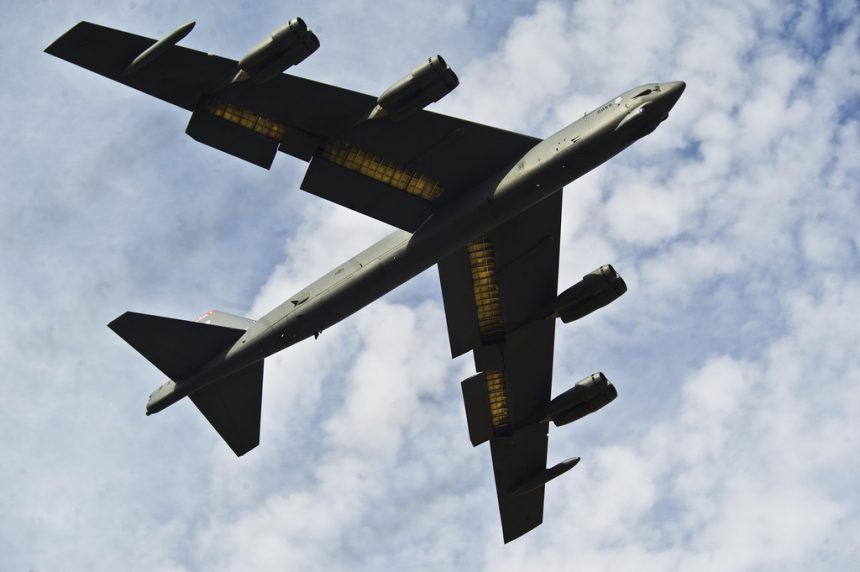A USAF Stratofortress bomber lost one of its 8 engines 25 miles to the northeast of Minot AFB, North Dakota. Type to re-engine the Buff?
On Jan. 4, 2017, in a quite unusual incident, a B-52H belonging to the 5th Bomb Wing lost one Pratt & Whitney TF33 turbofan engine shortly after take off from Minot AFB, North Dakota.
According to DefenseNews, that broke the news, the aircraft, one of the 76 “Buffs” still in service with the U.S. Air Force, was flying a training mission with 5 crew members; the engine fell in an unpopulated area without causing damage on the ground and a UH-1N Huey helicopter was dispatched to the site for a survey.
Few details are available at the moment as the U.S. Air Force investigates the root cause of the issue.
For instance, it’s still not clear whether a single engine or an entire nacelle pod (housing two TF-33 engines) attached to one of the four underwing pylons detached from the plane. Anyway, the aircraft managed to return safely to Minot: the loss of one (or even two on the same pod) is not a big deal for an aircraft powered by 8 engines.
Nevertheless, the incident is likely to fuel debate about the B-52’s engine program. With a +60 year-long career, the B-52 is a still quite advanced and heavily weaponized “dinosaur” expected to remain in service until something around 2040, when it will be fully replaced by the Northrop Grumman B-21 Raider.
Various options are known to have been considered so far, including an upgrade for the current TF-33 engines or their replacement with a different type: the Pratt PW2000 or other potential substitutes pitched by General Electric and Rolls-Royce that are likely to respond an eventual flying branch’s RFP.
Anyway it’s not the first time some part detaches from a U.S. Air Force aircraft mid-air: on Nov. 1, 2016, a U.S. Air Force KC-10 Extender aerial refueler belonging to the 60th Air Mobility Wing was forced to perform an emergency landing at Mountain Home Air Force Base, Idaho, after losing its flying boom that fell in a hay-field.
















